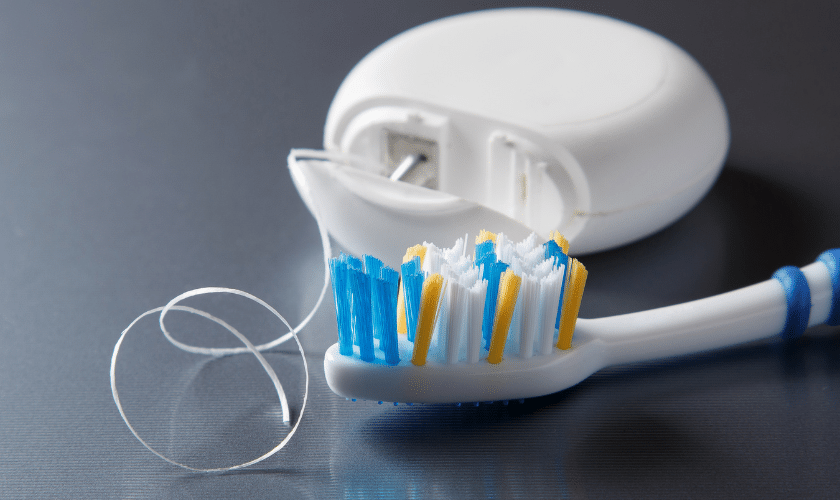
Maintaining excellent oral hygiene is crucial for a healthy, radiant smile. Proper brushing and flossing are essential practices that can help you achieve this. Let’s dive into the detailed steps to brush and floss correctly to ensure your teeth and gums remain in top-notch condition.
Importance of Proper Brushing and Flossing
Understanding the significance of brushing and flossing is the first step toward maintaining optimal oral health. Brushing helps remove food particles, plaque and bacteria that accumulate on the surface of your teeth. Flossing reaches the tight spaces between your teeth and along the gum line, areas that brushing alone cannot effectively clean.
Choosing the Right Toothbrush
Selecting the appropriate toothbrush is vital for effective brushing. Opt for a toothbrush with gentle bristles and a small head. This ensures it can navigate the contours of your mouth, cleaning hard-to-reach areas without causing damage to your gums. Electric toothbrushes are also an excellent choice, as they can provide a more thorough cleaning with less effort.
Best Toothpaste for Your Needs
Toothpaste selection is equally important. Choose a toothpaste containing fluoride to help strengthen tooth enamel and prevent decay. If you have specific needs, such as sensitivity or gum issues, there are specialized toothpastes available to address these concerns.
Correct Brushing Technique
For effective brushing, hold your toothbrush at a 45-degree angle to your gums. Clean the outer surfaces of your teeth using gentle, circular motions. Spend at least two minutes brushing, ensuring you cover all surfaces, including the inner surfaces and chewing areas. Don’t forget your tongue; it harbors bacteria that can cause bad breath.
Flossing: The Key to Complete Cleanliness
Flossing is crucial for removing plaque and food particles stuck between teeth and under the gum line. Using dental floss daily can prevent gum disease and cavities, contributing to overall oral health.
Types of Dental Floss
There are various types of dental floss to choose from, including waxed, unwaxed, flavored, and tape floss. Waxed floss slides more easily between tight spaces, while unwaxed floss provides a better grip. Select the type that best matches your preferences and needs.
How to Floss Correctly
Proper flossing technique involves a few simple steps:
- Take approximately 18 inches of floss and wind most of it around each middle finger, leaving an inch or two to work with.
- Hold the floss securely between your thumbs and forefingers.
- Carefully slide the floss between your teeth, moving it back and forth in a gentle motion.
- Curve the floss into a C-shape around each tooth and gently slide it under the gum line.
- Utilize a clean section of floss for each tooth.
Alternatives to Traditional Flossing
If traditional flossing is challenging, consider alternatives like floss picks, water flossers, or interdental brushes. These tools can make flossing easier and just as effective.
Establishing a Routine
Creating a consistent oral hygiene routine is essential for long-term dental health. Aim to brush your teeth a minimum of two times daily and floss once a day. Integrate these practices into your daily schedule to make them habitual.
Additional Oral Care Tips
Beyond brushing and flossing, there are other steps you can take to maintain a healthy mouth:
- Mouthwash: Use an antibacterial mouthwash to reduce plaque and bacteria.
- Diet: Limit sugary and acidic foods that can damage enamel.
- Regular Dental Visits: Schedule your dental visits every six months for professional cleanings and check-ups.
Common Mistakes to Avoid
Even with the best intentions, it’s easy to make mistakes in your oral care routine. Avoid these common pitfalls:
- Brushing too hard: This can erode enamel and irritate gums.
- Using an old toothbrush: Replace your toothbrush every three months or when the bristles fray.
- Neglecting your tongue: Bacteria on your tongue can cause bad breath and plaque buildup.
Maintaining a diligent oral hygiene routine is key to keeping your smile bright and healthy. By understanding and implementing proper brushing and flossing techniques, you can significantly reduce the risk of dental issues.
The Journey to a Healthier Smile
Achieving optimal oral health requires commitment and consistency. Proper brushing and flossing are the foundation of this journey. Implementing the right techniques and products will ensure that your teeth and gums remain in excellent condition.
Brushing and flossing correctly are essential habits for maintaining oral health. By following the steps outlined in this guide, you can keep your smile healthy and radiant. Besides, consulting a reputable Los Angeles dentist can provide additional personalized tips and professional care to enhance your dental routine.

